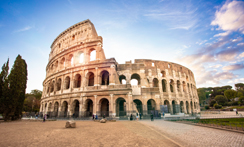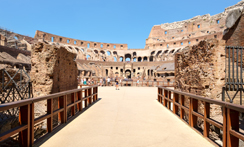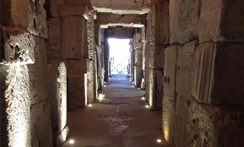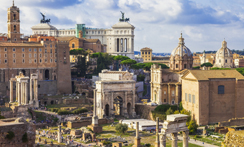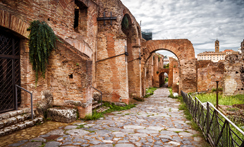Overview
The Arena Floor is the ‘stage’ where the action took place, where animals and men fought and died to entertain the masses of Rome. The original arena floor was a huge wooden platform or stage on top of the corridors of masonry we can see today. Measuring 83m long 48m wide it is an oval shape, designed to keep the action moving on the arena whilst allowing the best view to the spectators without any restrictions. All our modern arenas hail from this one. The arena has been partially reconstructed to allow visitors access to the centre of the arena or stage and to give an understanding of the building as it was.
Highlights
Porta Libertina (death door for wounded or dead gladiators) which you enter through
Reconstructed seating in marble to your right – you can see names and numbers on the seats
Emperors box (brick structure to the left)
Port Triumphalis (exit for the gladiators who won) straight ahead
Reconstructed trap door in the arena (small wooden platform to the left)
Bird’s eye view into the hypogeum or underground
History
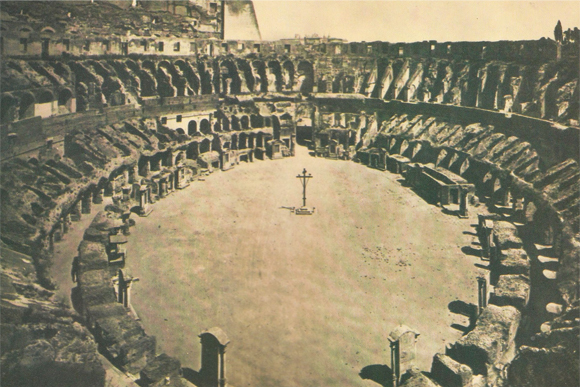
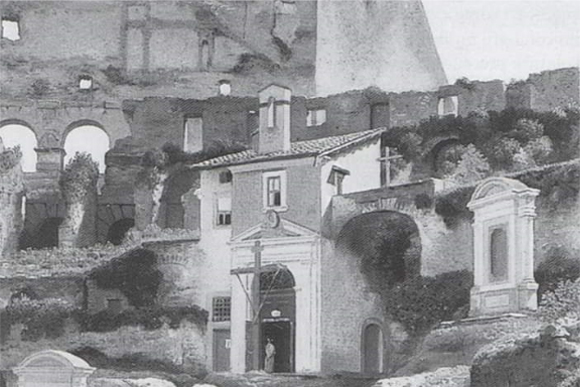
When the Colosseum was inaugurated in 80 A.D. by the emperor Titus, the arena was a simple, flat area covered in sand with animal cages around the outside (these can still be seen today). About ten years later Domitian (Titus’ brother) excavated beneath the arena to allow a hypogeum or underground chamber with ramps, pulleys and animal cages. This allowed special effects on the arena like no-one had ever seen! Fifteen corridors were built and a wooden platform was built on top covering the walls we see today. The wooden platform had trap doors that led from the ramps and lifts below.
Visiting the arena today means you can walk onto the edge of the reconstructed arena and stand on the level the gladiators and animals fought and died on. It gives a real sense of the overwhelming size of the building and an idea of what the gladiators must have felt looking out at the spectators, from the arena you have a 360-degree view of the colosseum.
You can appreciate how far up the poorer elements of society were (the top section is more than 40 metres away) and clearly see the two most important grand archways which were the gates of death and of triumph.
From the arena you can also get a closer look down into the hypogeum or underground which was the 'backstage' of the games, filled with animal cages, storage, lifts and pulleys. Looking down into the guts of the colosseum don’t forget about the hundreds of men who worked under unbearable conditions to pull off the greatest show on earth.
Interesting facts
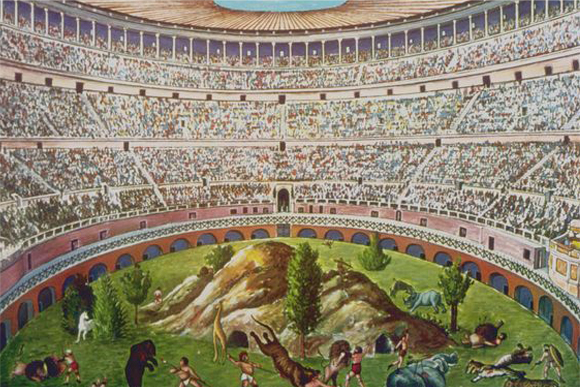
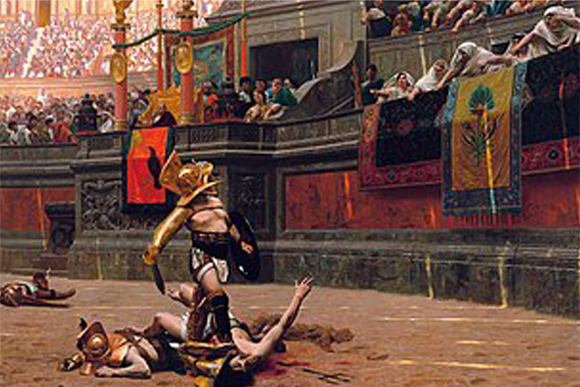
In our stadiums today the central area where the action happens is still called the arena. The name arena comes from the sand that covered it (harena in Latin). Why sand? It soaked up any blood, urine or vomit from the dying men and animals, gave the fighters traction and reduced the smell in the hot sun!
The arena area when complete measured 83m x 48m and was oval in shape. This meant that the men and animals had to keep moving which kept the action and suspense going.
Scenery was used on the arena. The venationes or animal hunts that were held in the morning, was a live action hunt. We have to imagine a landscape scene or a jungle scene with trees set up in the arena. The scenery was to give the appropriate setting to the animals but also to hide the trapdoors from which the animals emerged.
In 1332 the arena was used for a bull fight in honour of the visit of Ludwig the Bavarian. After having long forgotten the purpose of the building, medieval Rome revived the ancient animal hunts!
By the 1600s the arena was taken over by Christianity. A huge wooden cross sat in the centre of the arena and 15 tabernacles were set up for the stations of the cross. Numerous small chapels were built inside the ruins up until the 19th century.
Frequently Asked Questions
What happened to the original arena? The arena was made of wood, much like the reconstruction today. Over time it rotted and disappeared. Soon after the Colosseum stopped being used and the arena floor collapsed the underground was filled in with debris and rocks.
Where did the emperor sit? Evidence suggests that the emperor sat on a raised box on the south side of the Colosseum. An underground passage called the ‘passage of Commodus’ leads underground to the Palatine hill. This was an escape route for the Emperor or a private entrance and exit built by Domitian.
Why is there a cross? By the 16th century the Colosseum was believed to have been a place of Martyrdom for Rome’s Christian population. Churches and small chapels were built inside. Pope Benedict IV raised the stations of the cross in the Colosseum in the mid-1700s, but we have no evidence whatsoever that Christians were martyred on the site. However, the belief that this was the case stopped further dismantling of the building!
Did women fight in the arena? Rome was a male dominated world; many Romans would not have approved of women fighting. There are ancient sources that women fought but only under particular emperors (Domitian). By the 2nd century AD women were banned from fighting in the games.
